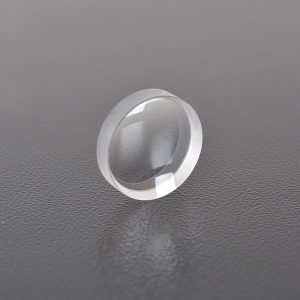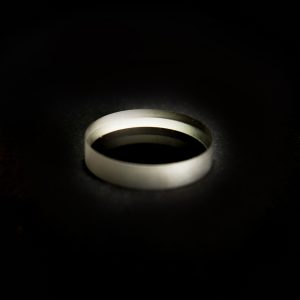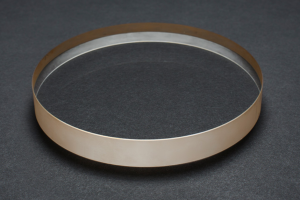
Measuring Prism: a Key Tool in Optical Measurement
As the core tool of optical measurement, measuring prism provides key support for the precise measurement of angles and distances by precisely controlling the refraction and reflection of light. From geodetic engineering to aerospace, from laser ranging to spectral analysis, these transparent crystals have built the cornerstone of modern measurement. In the future, they will be integrated with intelligent technology to open up a new dimension of high-precision measurement.
In the field of optical measurement, measuring prism is an indispensable tool and is widely used in various precision measurements and optical experiments. It helps surveyors obtain accurate angle, distance and position information by refracting and reflecting light. This article will introduce in detail the basic principles, types and importance of measuring prisms in practical applications.
1. Basic principles of measuring prism
The measuring prism is an optical element, usually made of transparent materials (such as glass or optical plastics) with a specific geometric shape. Its working principle is based on the refraction and reflection of light. When light enters the prism, it is deflected due to the different refractive indices between different media. By rationally designing the shape and angle of the prism, precise control of light can be achieved for measurement.
The core function of the measuring prism is to change the propagation direction of light so that it can propagate along a predetermined path. For example, in angle measurement, the prism can deflect the incident light by a certain angle, thereby helping the surveyor determine the position or direction of the target object.
2. Types of measuring prisms
According to different application requirements, there are many types of measuring prisms, and the common ones are as follows:
1. Right-angle prism: The right-angle prism is one of the most common measuring prisms, usually used to deflect light by 90 degrees. It is widely used in laser rangefinders, total stations and other equipment to help surveyors determine the position of the target object.
2. Penta prism: The penta prism can deflect the incident light by 180 degrees and is often used in situations where reverse measurement is required. Its characteristic is that no matter how the prism rotates, the direction of the outgoing light remains unchanged, so it is very useful in some high-precision measurements.
3. Prism: The triangular prism is usually used in spectroscopic or dispersion experiments, but it is also used in measurement. It can decompose white light into light of different wavelengths to help surveyors analyze spectral information.
4. Reflection prism: Reflection prism changes the propagation direction of light through internal reflection and is often used in laser ranging, optical communication and other fields. Its advantage is compact structure and can achieve precise control of light without losing light intensity.
3. Application of measuring prism
Measuring prism is widely used in many fields. The following are several typical application scenarios:
1. Geodesy and engineering surveying: In geodesy and engineering surveying, measuring prism is the core component of equipment such as total station and theodolite. By reflecting the laser beam back to the measuring equipment, the prism helps surveyors accurately calculate the distance, angle and position of the target object.
2. Laser ranging: In laser rangefinders, measuring prisms are used to reflect laser beams to help the equipment calculate the distance between the target object and the measuring point. This technology is widely used in construction, geological exploration and military fields.
3. Optical experiments: In optical experiments, measuring prisms are used to control the propagation path of light and help researchers conduct experiments such as refraction, reflection and interference of light. For example, in spectral analysis, a prism can decompose white light into different wavelengths of light, helping researchers analyze the spectral properties of substances.
4. Aerospace: In the field of aerospace, measuring prisms are used in navigation and positioning systems. By precisely controlling the propagation direction of light, prisms help aircraft determine their own position and attitude to ensure flight safety.
4. Accuracy and maintenance of measuring prisms
The accuracy of the measuring prism directly affects the accuracy of the measurement results, so the following points should be noted during use:
1. Cleaning of prisms: The surface of the prism must be kept clean. Any dust or stains will affect the propagation of light and cause measurement errors. Regularly use a special optical cleaner and soft cloth to clean the prism surface.
2. Calibration of prisms: Before using the measuring prism, it must be calibrated to ensure the accuracy of its angle and position. The calibration process usually requires the use of high-precision calibration instruments.
3. Avoid mechanical damage: Measuring prisms are usually made of glass or optical plastics and are susceptible to mechanical damage. During use and storage, collision and extrusion should be avoided to prevent scratches or cracks on the prism surface.
V. Future Development Trends
With the continuous advancement of optical technology, measuring prisms are also developing towards higher precision, smaller size and wider application fields. In the future, measuring prisms may be combined with technologies such as artificial intelligence and the Internet of Things to achieve a more intelligent measurement system. For example, by integrating measuring prisms with sensors and data processing systems, real-time monitoring and automatic calibration can be achieved, further improving measurement efficiency and accuracy.
Conclusion
As a key tool in optical measurement, the importance of measuring prisms is self-evident. By reasonably selecting and using measuring prisms, surveyors can obtain high-precision measurement data, providing strong support for scientific research, engineering construction, aerospace and other fields. With the continuous advancement of technology, the application prospects of measuring prisms will be broader, providing more possibilities for human exploration of the world.
Hanzhong Brisun Optics Co., Ltd. Is the high precision optical element manufacturer provides customized production of Various optical lenses, including spherical lens, cylindrical lens, optical window, mirror, prism, filter, metal base mirror and other high-precision optical elements. The base materials include various optical glass, fused quartz, calcium fluoride (CaF2), zinc selenide (ZnSe), germanium (GE), silicon (SI), sapphire, metal and other materials. And provide antireflective film, high reflection film, spectroscopic film, metal film and other optical coatings.
Welcome to OEM and Purchasing!


